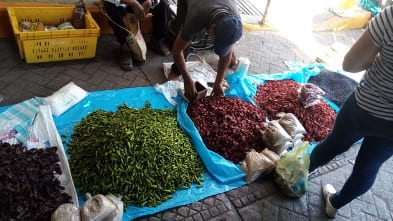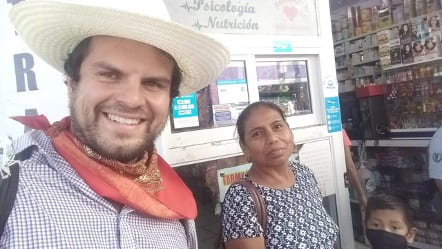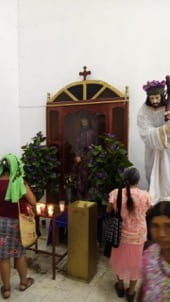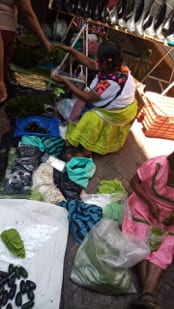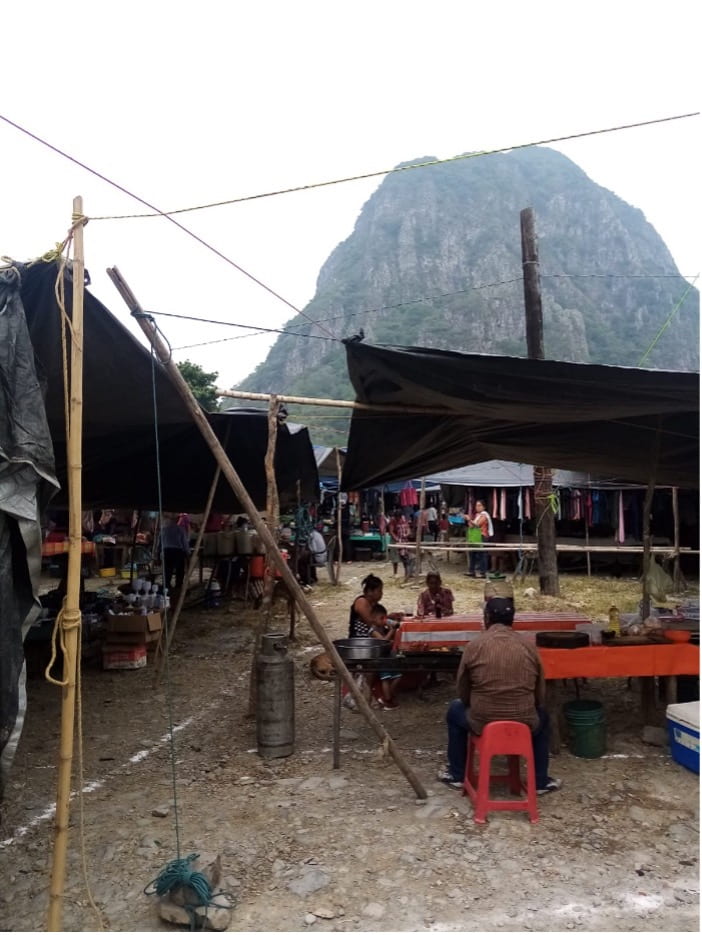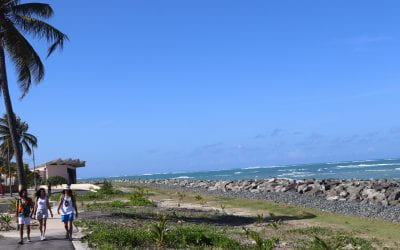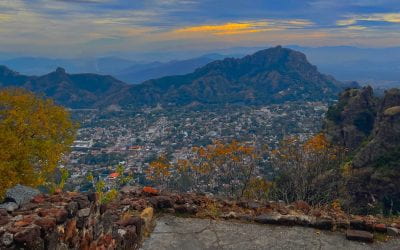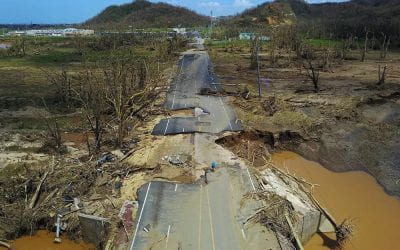
About the Author
Jorge Arredondo was born in the border town of Tecate. For 10 years, he crossed the border daily to study in the United States. After finishing his high school education, he went to Mexico City, where he studied interpreting and linguistic translation and the Guadelupan Happening in the Basílica of Our Lady of Guadalupe, while finishing up his bachelor’s degree in philosophy. He is now studying for a Master’s at Harvard Divinity School. His interests are Our Lady of Guadalupe, Latin American history, philosophy of religion and gender and sexuality studies.
Acerca del Autor
Jorge Arredondo nació en el pueblo fronterizo de Tecate. Por 10 años, cruzó la frontera a diario para estudiar en los Estados Unidos. Tras culminar sus estudios medio-superiores se fue a la Ciudad de México donde estudió interpretación y traducción lingüística y el Acontecimiento Guadalupano en la Basílica de Nuestra de Guadalupe, a su vez concluyó su licenciatura en filosofía. Actualmente estudia su maestría en Harvard Divinity School. Sus áreas de interés son: Nuestra Señora de Guadalupe, antropología nahua, historia latinoamericana, filosofía de la religión, estudios de género y sexualidad.
Learning Nahuatl in the Community
My experience in the Huasteca Veracruzana could be characterized by the relations and friendships I held and will hold dearly in my heart. To the best of my abilities in this small piece of writing, I would like to paint the picture of a part of humanity that is worth honoring, respecting and safeguarding for their kindness of heart, the sacredness of their traditions, and their resilient force amidst precarious situations. I went there to learn more about the religious and social ambits of the people and left there not only with a changed mind, but a change of heart, yollotl.
Tecomate is one of more than one hundred communities that belong to Chicontepec. The biome is tropical rainforest: it is hot (to-tonic, which is a reduplication of tonatiuh, sun) and humid. The macehules heavily depend on rain (tla-a-huetzi, literary, water that falls) for their crops. They commit to religious rituals to ask for water and do so in rituals some westerners would consider scandalous. I would surmise 80 percent of jobs (tequiti) are related to the pixca-itocoa. Maze is the number one nutritious source; tortillas-tlaxcalli nurtures the land, followed by a rich variety of fruits and vegetables that can be found in overabundance (beans, mango, chile, zapote, ciruelas criollas, plátano macho y manzano).
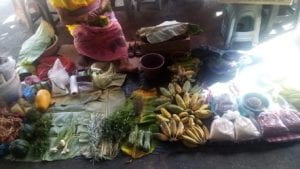
The communities lack drainage systems; many in the community must carry water from the well in buckets for a couple of kilometers. When it rains, mud (zoquitl) makes moving around very hard, especially considering very few members of the community own their own cars. People transport themselves in “pasajeras” and “colectivos,” the former is a pickup truck, and the latter is a taxi that must be occupied by five passengers for the driver to start a trip; this is the only way for him to earn a profit.
Those who work the field wake up at 4 a.m. to work at 6 a.m. in the field. Depending on the deal the laborers make, work usually concludes at 1 p.m., when the sun is at its highest. Lately, along with the 200 pesos payday (US$10) the patron invites them to drink wuino (hard liquor) which has propitiated alcoholism among men within the communities. The pixca labor is hard work, especially when the temperature rises to 83 F°. This sort of labor does not allow people to save, there is no retirement, and elders continue working until it is physically impossible to do so; I witnessed a pasajera driver who seemed to be in his 70s and could hardly see driving. Women do household labor (cook, wash clothes, clean the house take children to school) and are discouraged from doing any other task, although in some cases, they administer a small shop, or sell fruit or popsicles in the streets.
Many macehuales migrate to other states or the United States seeking better job opportunities. Oblivion is harvested as those who leave tend to forget their Nahua roots and their language. The youngsters who still live in Tecomate feel embarrassed (pinahua) of speaking Nahuatl since there is prejudice and discrimination towards indigenous people; being indigenous has often been seen as less “civilized” according to Western standards. Many adolescents aspire to leave and study college elsewhere (usually Universidad Autónoma de Zacatecas) and therefore forget much of their origins. For all these reasons the Nahuatl language is dying; the elders are the only ones speaking it and the youngsters are not growing (mozcaltia) bilingual.
How did we reach this point? The SEP, the government bureau of education, began to construct schools in rural areas following an urban elitist agenda after the Mexican Revolution. This education program was homogenous across the country and only contemplated the Spanish language. In this education program, 80 years ago, children were discouraged from speaking Nahuatl through corporal punishment that went from making them carry water jugs from the well to being smacked with a ruler if caught speaking any indigenous language. Teachers would usually place a student-vigilante who would accuse those who spoke Nahuatl. Teachers summoned the student´s parents to instruct them that, lest their kids failed in life, they had to embrace Spanish at home. These policies had damaging effects that are now being reversed, hopefully, it is not too late.
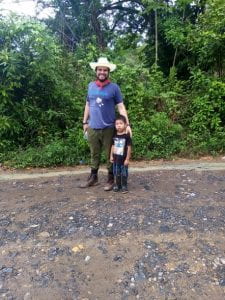
Since residents must endure many difficulties and sufferings (tequipacholli), religion is one outlet with which to respond to the reality of children dreading their past and language, and labor depending on volatile natural resources. There are three main religious expressions in the Chicontepec region: Native Beliefs (neltocaliztli), Catholicism and Protestantism (simply referred to as “cristianos”, or “hermanos separados”). I will address only the former two since the latter is a U.S. import. I will first address private worship in the Native Beliefs, then do so in the public sphere, and will present how Catholicism has inculturated the local beliefs.
When a family member suffers from sickness (cocolixtli), a house altar (tlaixpan) is decorated. It contains the image of the sick, their favorite drinks in cups (usually soda and beer, tzopelic huan chichic), bread, flowers and an image of a couple of saints (usually Our Lady of Guadalupe and St. Antony of Padua). On the floor there is copal incense that is used to do a limpia; copal smoke is sent to the sickly to be cleansed from evil. Coyol leaf is used for this purpose as well.
In the public sphere, there are, mutatis mutandis, religious pilgrimages to the sacred mountain (malhuilli tepetl) where there is a xochicalli (literary, flowery house) where rituals (campeca) are celebrated in honor of Chicomexochitl who is the main centli deity; he is represented as a kid, who is also venerated as a girl, tlalli, earth. A wise elder (huehuetlacatl) leads (yecana) the ritual. The ritual is usually carried out to offer food to the deity (tlatlacualtiah) when there is a drought (ahuaquiztlan). The spiritual leader instructs the macehuales on the ways of the elders and then orders everyone to a role (cleaning, cutting paper in the shape of the deity, dancing, etc).
There is much chanting and music (tlatzotzonanih) which the huehuetlacatl instructs how to conduct; he entreats the macehuales to continue the dance (mitote) ritual which ought to be uninterrupted. Colorful newsprint paper is cut into figurines (tlatectli) and shaped like a boy or a girl honoring the maize and the earth. A chicken´s blood is offered and sprinkled into the paper-cut images. The animal is not eaten as the sacrifice is consecrated: asking the deity for the much-needed water. The pilgrimage back is as respectful as the way up, macehuales have fasted, and avoided using the tepetl as a restroom; finally, no one can´t spit on this sacred mount.
The Catholic expressions of religiosity do not exclude the private or public neltocaliztli, in fact, many of the native rites assumed the Catholic imagery of sacrifice and took up statues and holy images for veneration which some might have called syncretic. Although this does occur, the most common religious practice involves pilgriming with a statue of Our Lady of Guadalupe (May) and the Sacred Heart of Jesus (June) every day for the next two months. The religious leaders are called “catequistas”, apart from organizing the rosaries every Sunday and the said month pilgrimages, they also coordinate the pueblo´s patron saint feast. Tecomate is consecrated to St. Joseph and on that date, the whole pueblo celebrates “a lo grande,” sparing little.
I was able to know this culture through the openness with the people. Every pasajera ride standing up in the back of the truck passing through terraceria trails, the macehuales told me about how they struggled to harvest the milli-milpa, how some son of theirs had emigrated and forgotten about them. I received this news while witnessing how the elder society regretted seeing youngsters with their earphones, blocked away from all reality, hearing American music instead of being there, present, listening to their elders speak the language of their elders. In other cases, I sat with men who were widowed and told me about their life while shucking the maize. I saw women carrying pails of water for what seemed to be kilometers without end, everyone lived “al día,” with their necessities taken care of daily, with little opportunity to save or invest resources.
I was able to know this culture when the macehuales, with their scarce resources, never failed to offer me what they had. I was very welcomed and loved. They felt cherished by how a stranger came to their small pueblito to learn their ways, their culture and their language. They felt uplifted and not marginalized, important, not neglected. I made tequixpomeh huan teixmacahua, friends, and a family. I never failed to express how worried I was about seeing the youngsters neglect their culture. I was not all that negative since I expressed how blessed I felt to learn Nahuatl and how there is still hope as conscientiousness about our Nahua roots is reviving, especially when there is such a great heart and soul in the people who have maintained it alive.
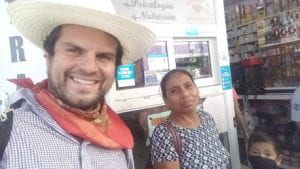
I want to thank DRCLAS for funding this research trip. I also have much gratitude for those who created this Nahuatl program, IDIEZ which is forming native teachers to instruct and form the world on the Nahua culture and Nahuatl. It is also promoting the Huasteca youth to reconnect with their culture and language. The experience I acquired in this research trip will continue to help me be more in touch with the reality (past and present) of the Nahua world. My academic work will be more enrooted in human experience and be more conscientious of the current struggles of a Nahua community. Getting to know the people of Tecomate, their way of life, and how they see the world has helped me change my vision of the world and want to make a difference in their lives.
Aprendiendo Nahuatl con la Comunidad
Por Jorge Arredondo Sevilla
Mi nombre es Jorge Arredondo Sevilla y soy mexicano. Nací en un pueblo fronterizo con los Estados Unidos, Tecate, Baja California. Desde niño cruzaba diario la frontera para estudiar en una escuela estadounidense ya que mis padres querían que aprendiera inglés. Tras culminar exitosamente el high school decidí conocer mis raíces y opté por estudiar mi carrera universitaria en la Ciudad de México. Estudié interpretación y traducción, pero esto no me satisfizo y entré al seminario para ser sacerdote católico. Esa no es mi vocación.
De esos años de ministerio me llevé el mensaje de comunión y compasivo de la Virgen de Guadalupe, quien se le apareció a un indígena llamado Juan Diego unos años después de la conquista de México. Su mensaje reconcilió a los pueblos originarios al mostrar el rostro misericordioso de Dios a las gentes que habían padecido orfandad y vejaciones por parte de los conquistadores. Para entender más profundamente las fuentes de este evento, me adentré a estudiar náhuatl clásico y moderno. Este último lo viví recientemente en un viaje académico auspiciado por DRCLAS.
Mi experiencia en la Huasteca Veracruzana se podría caracterizar por las relaciones y amistades que sostuve y guardaré en mi corazón. Con la mejor de mis capacidades me gustaría pintar en este escrito una imagen, el retrato de una parte de la humanidad que vale la pena honrar, respetar y salvaguardar por la bondad de su corazón, lo sagrado de sus tradiciones y la resiliencia de su corazón que resiste agravios en situaciones precarias. Fui allí para conocer más sobre los ámbitos religiosos y sociales de la gente y regresé no sólo con ideas nuevas, sino con un cambio de corazón, yollotl.
Tecomate es una de las más de cien comunidades que pertenecen a Chicontepec. El bioma es selva tropical: hace calor (to-tonico, que es una reduplicación de tonatiuh, sol) con mucha humedad. Los macehules dependen en gran medida de la lluvia (tla-a-huetzi, literalmente, agua que cae) para sus cultivos. Se comprometen con rituales religiosos para pedir agua y lo hacen en liturgias que algunos occidentales considerarían escandalosas. Calculo que el ochenta por ciento de los trabajos (tequiti) están relacionados con la pixca-itocoa. El maíz es la fuente nutritiva primaria de la región; tortillas-tlaxcalli nutre al pueblo, seguida de una rica variedad de frutas y verduras que se pueden encontrar en sobreabundancia (frijoles, mango, chile, zapote, ciruelas criollas, plátano macho y manzano).

Las comunidades carecen de sistemas de drenaje, muchas casas dependen de los familiares que lleven agua a baldazos desde el pozo; este trayecto a veces es de un par de kilómetros. Cuando llueve, el lodo (zoquitl) hace que moverse sea muy difícil, especialmente considerando que muy pocos miembros de la comunidad tienen auto propio. Las personas se transportan en “pasajeras” y “colectivos”, el primero es una camioneta y el segundo es un taxi que debe ser ocupado por cinco pasajeros para que el conductor inicie un viaje; esta es la única manera de que sea costeable.
Los que trabajan en el campo se levantan a las cuatro de la mañana para trabajar a las seis en la milli, milpa. Dependiendo del trato que hagan los trabajadores con el patrón, el trabajo suele concluir a la una de la tarde, cuando el sol está en su punto más alto. Últimamente, junto con la paga de 200 pesos (US$10) el patrón les invita wuino (aguardiente) que ha propiciado alcoholismo entre los hombres dentro de las comunidades. El trabajo de la pixca es arduo, especialmente cuando la temperatura sube a 38 C°. Este tipo de trabajo no permite ahorrar, no hay jubilación y los ancianos continúan labrando hasta que es físicamente imposible hacerlo. En otros casos, fuera de la milpa, el trabajo no deja de ser grave; fui testigo de un conductor de pasajera que parecía tener unos 70 años y apenas podía ver. Por otro lado, las mujeres realizan labores del hogar (cocinan, lavan ropa, limpian la casa, llevan a los niños a la escuela) y están desanimadas de cualquier otro emprendimiento, en algunos casos, administran una pequeña tienda, o venden frutas o paletas heladas en las calles.
Muchos macehuales migran a otros estados o a los Estados Unidos en busca de mejores oportunidades laborales. Se cosecha el olvido ya que quienes se van tienden a olvidar sus raíces nahuas y su lengua. Los jóvenes que aún viven en Tecomate sienten vergüenza (pinahua) de hablar náhuatl ya que existe prejuicio y discriminación hacia los indígenas; ser indígena a menudo se ha visto como menos “civilizado”, según los estándares occidentales. Muchos adolescentes aspiran a irse y estudiar la universidad en otro lugar (generalmente la Universidad Autónoma de Zacatecas) y por eso, tristemente, no es raro que se les olvide sus orígenes. Por todas estas razones la lengua náhuatl está muriendo; los mayores son los únicos que la hablan, y los jóvenes no están creciendo (mozcaltia) bilingües.
¿Cómo llegamos a este punto? La SEP, la Secretaría de Educación Pública, comenzó a construir escuelas en áreas rurales siguiendo una agenda elitista urbana después de la Revolución Mexicana. Este programa educativo era homogéneo en todo el país y sólo contemplaba el idioma español. Hace 80 años, en este programa educativo, se desalentaba a los niños a hablar náhuatl mediante castigos corporales que iban desde hacerlos sacar cántaros de agua del pozo hasta otros niveles más severos, como ser golpeados con una regla si los sorprendían hablando alguna lengua indígena. Los maestros solían colocar a un alumno para que sea el vigilante y consecuentemente acusaba a los que hablaran náhuatl. Los docentes convocaron a los padres de familia para instruirles que, para que sus hijos no fracasaran en la vida, debían hablar español en casa. Estas políticas tuvieron efectos dañinos que ahora se están revirtiendo, con suerte, no es demasiado tarde.

Al pasar por muchas dificultades y sufrimientos (tequipacholli), una salida para responder a esta realidad: temor por expresar su cultura y lenguaje, sin mencionar cómo la sociedad dependía de los volátiles fenómenos meteorológicos, la religión era vivida como respuesta. Hay tres expresiones religiosas principales en la región de Chicontepec: creencias nativas (neltocaliztli), catolicismo y protestantismo (simplemente denominados “cristianos” o “hermanos separados”). Me referiré solo a los dos primeros ya que el último es una importación estadounidense ya muy bien conocida. Primero abordaré el culto privado en las creencias nativas, luego lo haré en la esfera pública y presentaré cómo el catolicismo ha inculturado la creencias nativas.
Cuando un miembro de la familia sufre una enfermedad (cocolixtli), se decora un altar de la casa (tlaixpan). Éste contiene la imagen de los enfermos, sus bebidas favoritas en copas (generalmente refresco y cerveza, tzopelic huan chichic), pan, flores y una imagen de una pareja de santos (generalmente Nuestra Señora de Guadalupe y San Antonio de Padua). En el piso hay incienso de copal que se usa para hacer una limpia; se envía humo de copal a los enfermizos para que se limpien del mal, si están ausentes, “se les manda”. La hoja de coyol también se usa para este propósito.
En el ámbito público, hay, mutatis mutandis, peregrinaciones religiosas a la montaña sagrada (malhuilli tepetl) donde hay un xochicalli (casa florida, literalmente) donde se celebran rituales (campeca) en honor a Chicomexóchitl que es la deidad principal; se le representa como un niño, a quien también se le venera como una niña, tlalli, tierra. Un anciano sabio (huehuetlacatl) dirige (yecana) el ritual. El ritual se suele realizar para ofrecer alimento a la deidad (tlatlacualtiah) cuando hay sequía (ahuaquiztlan). El líder espiritual instruye a los macehuales sobre los caminos de los ancianos y luego presenta tareas a cada uno (limpiar, cortar papel con la forma de la deidad, bailar, etc.).
Hay mucho canto y música (tlatzotzonanih) que el huehuetlacatl instruye a dirigir; ruega a los macehuales que continúen el ritual de la danza (mitote) que debe ser ininterrumpido. El papel colorido se corta en figuritas (tlatectli) y se les da forma de niño o niña en honor al maíz y la tierra. Se ofrece sangre de gallina y se rocía sobre las imágenes recortadas. No se come el animal ya que se consagra lo que se ha sacrificado: pidiendo a la deidad el agua que tanto se necesita. El peregrinaje de regreso es tan respetuoso como el de subida, los macehuales han ayunado, y evitado usar el tepetl como baño; finalmente, nadie puede escupir en este monte sagrado.
Las expresiones católicas de religiosidad no excluyen el neltocaliztli privado o público, de hecho, muchos de los ritos indígenas asumieron la imaginería católica del sacrificio y tomaron para su veneración estatuas e imágenes sagradas que algunos podrían haber llamado sincréticas. Aunque esto ocurre, la práctica religiosa más común consiste en peregrinar con una estatua de Nuestra Señora de Guadalupe (mayo) y el Sagrado Corazón de Jesús (junio) todos los días durante los próximos dos meses. Los líderes religiosos son llamados “catequistas”, además de organizar los rosarios todos los domingos y las romerías de dicho mes, también coordinan las fiestas patronales del pueblo. Tecomate está consagrado a San José y en esa fecha todo el pueblo celebra “a lo grande”, ahorrando poco.
Pude conocer esta cultura a través de la apertura con la gente. Cada viaje de pasajera de pie en la parte de atrás de la camioneta pasando por senderos de terracería, los macehuales me contaban cómo luchaban por cosechar la mili-milpa, cómo algún hijo de ellos había emigrado y se había olvidado de ellos. Recibí esta noticia siendo testigo de cómo la sociedad de la tercera edad lamentaba ver a los jóvenes con sus auriculares, bloqueados de toda realidad, escuchando música americana en lugar de estar allí, presentes, escuchando a sus mayores hablar el idioma de sus antepasados. En otros casos, me senté con hombres que habían enviudado y me contaron sobre su vida mientras descascaraban el maíz. Vi mujeres cargando baldes de agua por lo que parecían ser kilómetros interminables, todos vivían “al día”, con sus necesidades atendidas diariamente, con poca oportunidad de ahorrar o invertir recursos.
Pude conocer esta cultura cuando los macehuales, con sus escasos recursos, nunca dejaron de ofrecerme lo que tenían. Fui muy acogido y querido. Se sintieron queridos por cómo un extraño llegó a su pequeño pueblito para aprender sus costumbres, su cultura y su idioma. Se sintieron elevados y no marginados, importantes, no descuidados. Hice tequixpomeh huan teixmacahua, amigos y una familia. Nunca dejé de expresar lo preocupado que estaba por ver a los jóvenes descuidar su cultura. No fui tan negativo ya que expresé lo bendecida que me sentí de aprender náhuatl y cómo todavía hay esperanza ya que la conciencia sobre nuestras raíces nahuas está reviviendo, especialmente cuando hay un gran corazón y alma en las personas que lo han mantenido vivo.
Quiero agradecer a DRCLAS por financiar este viaje de investigación. También tengo mucho agradecimiento para quienes crearon este programa de náhuatl, IDIEZ que está formando maestros nativos para instruir y formar al mundo sobre la cultura y lengua náhuatl. También está promoviendo que la juventud huasteca se reencuentre con esta realidad. La experiencia que adquirí en este viaje de investigación me seguirá ayudando para estar más en contacto con la realidad (pasada y presente) del mundo nahua. Mi trabajo académico estará más enraizado en la experiencia humana y será más consciente de las luchas actuales de una comunidad nativa. Conocer a la gente de Tecomate, su forma de vida y cómo ven el mundo me ha ayudado a cambiar mi visión del mundo y querer hacer una diferencia en sus vidas.
More Student Views
Weapons of Mass Construction: Building a Puerto Rico for the People
I zip up my raincoat and turn on my headlamp as we tread along a damp trail in El Yunque National Rainforest, Puerto Rico.
Climbing the Tepozteco: Meditations on Mexico
English + Español
With sweat trickling down my forehead, I meditated on the question: What does motivation look like?
Cultivating Resilience in Puerto Rico: Harvesting Fields of Change
As a born and raised Puerto Rican, my journey has always been intertwined with my homeland’s vibrant hues and resilient spirit.


